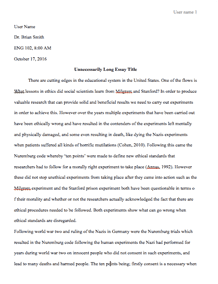

Nonporous Items
The activities of conducting investigations at the crime scene involve processing, collecting and preserving fingerprint evidence. The surfaces on which the fingerprints are extracted can either be porous or nonporous (latent prints). It follows that latent prints can either be porous or nonporous. The nonporous substrates or surfaces are considered to be impermeable to fluids. Nonporous surfaces include items such as plastic, glass, and metal. Such items are found to be fragile since the fingerprint residues can be lying on the surfaces (Daluz, 2014). This implies that even the slightest handling can result into wiping away of the latent print evidence on the nonporous surfaces (items). The nonporous surfaces or items do not absorb sweat. The nonporous items such as glass are usually found in the crime scenes such as burglary and murder.
Method for Processing Fingerprints on Nonporous Items
The contents of a fingerprint can lie on the surface for a long time unless they are wiped out. It can, therefore, be asserted that the latent fingerprints residing on nonporous items are vulnerable to the effects of winds, humidity, temperature, and rain. Using fingerprint powder is one of the methods I can use to process fingerprints on nonporous items. This will involve dusting a nonporous surface with fingerprint powder such as black granular or aluminum flake (Fish, Stout, & Wallace, 2010). Once the fingerprints appear, they can then be photographed and stored. The nonporous items can then be lifted using a clear adhesive tape as a way of preserving the print. Some of the shortcomings of this method are that it can lead to the contamination of the evidence. It is imperative for investigators to use Alternate Light Source (ALS) technique to examine the nonporous items.
Cyanoacrylate is an excellent method for processing latent prints. However, the latent prints often lack contrast and require enhancement. What are some of the enhancement technique used? Are there any health hazards associated with these techniques?
The Cyanoacrylate is the fuming approach utilized in the development of the latent friction ridge skin impression within the forensic labs and crime scene fields. Superglue fumes are one of the enhancement technique that can be applied when it comes to improving the contrast of the latent prints. Superglue fumes fix the impression of the latent print to the substrate by making it difficult to erase the fingerprints. This minimizes the chances of destroying the latent prints during the process of packaging and transportation of fingerprint evidence from the scene of the crime (Garg, Kumari, & Kaur, 2011). As a way of enhancing the visualization of the latent print, Protein and hemoglobin stains, printer ink, hair dye and commercial colorants can be added to cyanoacrylate. This facilitates the process of copolymerization of vaporized cyanoacrylate monomers as well the colorant of molecules on fingerprint residues. Fluorescent cyanoacrylate (Lumicyano) is also an enhancement technique, and it is typically used to excite the developed latent impressions.
Some of the enhancement techniques used to improve the contrast of the latent prints are chemically produced and are toxic. For instance, the commercial colorant and the fingerprint powders consist some chemical elements which pose potential health hazards (Fish, Stout, & Wallace, 2010). There is the need of applying enhancement techniques which do not have adverse implications for the health of individuals.
References
Daluz, H. M. (2014). Fingerprint Analysis Laboratory Workbook. New York: CRC Press.
Fish, J. T., Stout, R. N., & Wallace, E. (2010). Practical Crime Scene Investigations for Hot Zones. New York: CRC Press.
Garg, R., Kumari, H., & Kaur, R. (2011). A new technique for visualization of latent fingerprints on various surfaces using powder from turmeric: A rhizomatous herbaceous plant (Curcuma longa). Egyptian Journal of Forensic Sciences, 53-57.
Request Removal
If you are the original author of this essay and no longer wish to have it published on the customtermpaperwriting.org website, please click below to request its removal:


